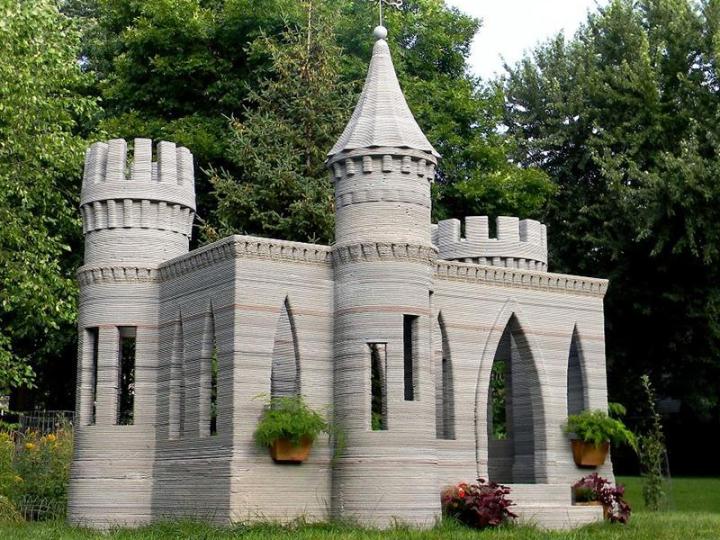
The castle measures 10 feet by 16 feet (3m by 4.9m) and stands 12 feet (3.7m high). One of the biggest challenges Rudenko faced was finding the right liquid concrete mix: “Although cement has existed for thousands of years, it hasn’t been common to use cement mixes for low-speed precise extrusion,” he told CNET. “It took a lot of research and experimenting to come up with the proper mix. So the recipe is my own with common materials and some additives.”
Related: Amazon now has a 3D printing store where you can customize and print your own creations
We might be some way off from having a 3D printer installed in every home, but barely a week goes by without some new demonstration of the technology’s potential — from saxophones to ice cream, there’s no real limit to what 3D printing can eventually do.
The castle hasn’t been designed to house a king and queen, as you can tell from its small size. Instead, Rudenko wanted to use the structure as a proof-of-concept for his bespoke 3D printer and concrete extruding process. Now he has tested the technology, he plans to move on to creating a full-sized house for his next project. Anyone interesting in partnering in the scheme is encouraged to get in touch with Rudenko through the Total Kustom site.
“A new era of architecture is inevitable,” writes the designer on his blog, “and I’m excited to see where the next few years will lead in terms of construction and design. I have previously been sure I could print homes, but having finished the castle, I now have proof that the technology is ready.”
Editors' Recommendations
- 3DMakerpro’s Seal is a pocket-sized scanner to make next-gen precision 3D prints
- Need a last-minute Halloween costume? Check out these 3D-printable getups
- The best 3D printers under $500
- The future of making stuff: Inside the evolution of 3D printing with Formlabs
- Inside the quest to 3D print a perfectly palatable steak


